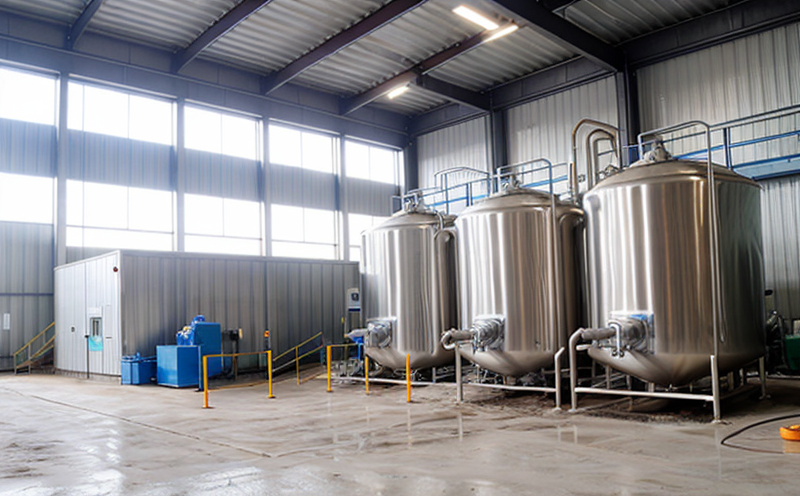EPA 200.8 Metals by ICP MS Test in Process Water
Understanding process water quality is essential for maintaining efficient and compliant industrial operations, particularly within sectors like manufacturing, pharmaceuticals, and electronics. The EPA Method 200.8, which utilizes Inductively Coupled Plasma Mass Spectrometry (ICP-MS), offers a robust means to analyze trace metal content in these waters.
The test procedure is stringent and designed to detect metals at very low concentrations, ensuring that contaminants do not interfere with critical processes or regulatory requirements. This service ensures that your industrial process water meets the highest standards of purity and safety.
Here’s a breakdown of what this testing entails:
- Sample Collection: Proper collection is crucial to ensure accurate results. Samples must be representative of the entire body of water being tested.
- Preparation: Pre-treatment steps include dilution or acidification, depending on metal concentration levels and target analytes.
- Instrumentation: The ICP-MS system is used to ionize the sample. This process excites the ions into a plasma column where they are separated by mass and detected based on their mass-to-charge ratio.
The EPA Method 200.8 has strict acceptance criteria, ensuring that only trace amounts of metals are present in your water. Compliance with this method is not just about meeting regulatory requirements but also about safeguarding the integrity and efficiency of your industrial processes. The test covers a range of critical metals such as lead, copper, zinc, cadmium, nickel, and mercury.
For accurate results, it’s important to understand that the ICP-MS method is highly sensitive and capable of detecting trace elements at parts per billion (ppb) levels. This sensitivity makes EPA 200.8 a preferred choice for industries where even minor contamination can have significant impacts.
| Step | Description |
|---|---|
| Sample Collection | Ensure the sample is representative of the entire water body. |
| Preparation | Dilution or acidification as required for target metals. |
| Instrumentation | ICP-MS analysis to ionize and separate metal ions by mass-to-charge ratio. |
Scope and Methodology
The scope of the EPA Method 200.8 test encompasses a variety of metals that are critical for process water quality, including but not limited to lead, copper, zinc, cadmium, nickel, and mercury. The methodology ensures precision and reliability in detecting these elements at trace levels.
| Element | Methodological Approach |
|---|---|
| Lead (Pb) | Detection range from 0.1 to 500 μg/L. |
| Copper (Cu) | Detection range from 0.2 to 300 μg/L. |
| Zinc (Zn) | Detection range from 0.5 to 400 μg/L. |
| Cadmium (Cd) | Detection range from 0.1 to 20 μg/L. |
| Nickel (Ni) | Detection range from 0.5 to 300 μg/L. |
| Mercury (Hg) | Detection range from 0.1 to 200 ng/L. |
Industry Applications
The EPA Method 200.8 is widely used in industries where water quality can significantly impact product integrity, such as pharmaceuticals and electronics manufacturing. In these sectors, even minute levels of metals can lead to contamination or reduced efficiency.
| Industry | Impact of Contaminants |
|---|---|
| Pharmaceuticals | Metal contamination can lead to batch failures and recalls. |
| Electronics Manufacturing | Contaminants in water used for cleaning or etching processes can affect product quality. |
| Manufacturing | Poor water quality can lead to reduced equipment efficiency and increased maintenance costs. |
Competitive Advantage and Market Impact
- Achieving Regulatory Compliance: Ensures adherence to stringent environmental standards.
- Maintaining Quality Standards: Guarantees product purity in industries reliant on water quality.
- Enhancing Efficiency: Identifies and mitigates potential sources of contamination early, preventing costly shutdowns.





